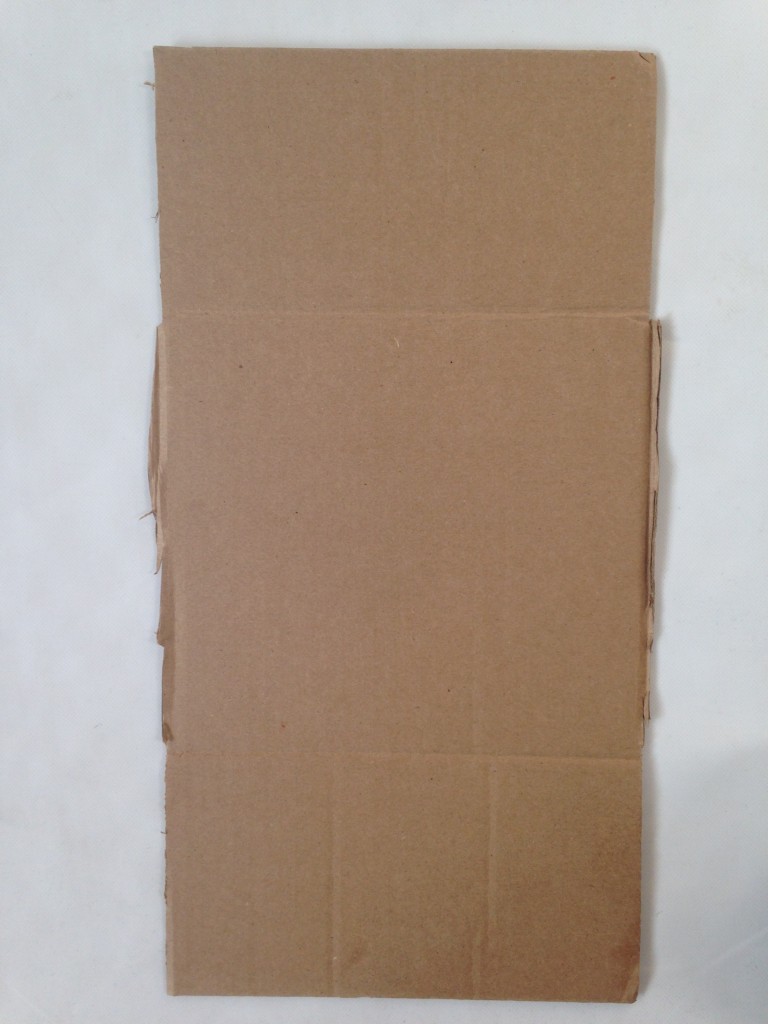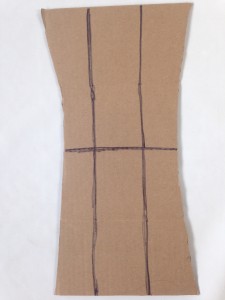[wpspoiler name=”Lukasa Memory Board” open=”true” style=”aatw-video”][/wpspoiler]
THE LUKASA MEMORY BOARD GAME: ADVANCED VERSION (basic version here.)
A game of interpretation and imagination.
MATERIALS NEEDED:
- piece of cardboard, approximately 7″ x 15″
- beads, coins, shells or anything you’d like to use for pieces
- a timer or clock
- imagination
PLAYERS: At least 3 players. Best to have several people in the room to enjoy the stories.
SUGGESTED AGES: 9 and up.
THE BASICS:
Two MBUDYE (interpreters) compete to tell the most creative story using the pieces laid out by the MULOPWE (the king).
Step 1: THE BOARD
 The board for your Lukasa Memory Board Game can be very simple. A rectangular piece of cardboard, about 7″ x 15″ (real lukasa memory boards are a bit smaller, about 5″ x 8″) — cut from a box would be ideal. You can also use any rectangular mat, folder or sheet of paper.
The board for your Lukasa Memory Board Game can be very simple. A rectangular piece of cardboard, about 7″ x 15″ (real lukasa memory boards are a bit smaller, about 5″ x 8″) — cut from a box would be ideal. You can also use any rectangular mat, folder or sheet of paper.
A traditional lukasa memory board is not rectangular, but shaped slightly like an hourglass. If you want to want to get fancy, cut your board into the shape of an hourglass.
Draw a line across the middle to represent the LUKALA, a row of raised mounds on sent on most memory boards. Divide your board into six sections, three on the top, three on the bottom.
Step 2: THE PIECES
 You can use any little things you find around the house for the game pieces The Luba used colorful beads and shells for their memory boards so default to those, but you may also use buttons, coins or even small pieces of paper. You need at least 30 beads or game pieces – they don’t all have to be the same.
You can use any little things you find around the house for the game pieces The Luba used colorful beads and shells for their memory boards so default to those, but you may also use buttons, coins or even small pieces of paper. You need at least 30 beads or game pieces – they don’t all have to be the same.
Step 3: PREPARING THE BOARD
- Two players in each round will be MBUDYE. The third will be the MULOPWE (king).
- The MULOPWE lays out the pieces on the memory board. The MULOPWE chooses how many pieces to put into each section.
Above the LUKALA, on the top half of the board, the number of pieces the MULOPWE places in the sections will dictate the three characters in the MBUDYE’s story:
ONE => A HERO or HEROINE – In Luba lore, the hero is usually Mbidi Kiluwe, “culture-bearer of kingship,” though your hero or heroine can be anyone. Your hero or heroine can be any age.
TWO => AN ANTI-HERO – The villain is often the evil Nkongolo Mwamba, but in your story can be anyone.
THREE => A BUFFALO: Any character that is powerful and brave
(In Luba tradition associated with, says Wikipedia, “ambivalent power and secret potential.”)
FOUR => A TORTOISE: Any character that is old and wise
(Associated with, according to PrimarySource.org, “the passage of time and secret knowledge.”)
FIVE => A SERPENT: Any character that’s a bad dude, a trickster
(Associated with violence or, if you don’t want your story to go that way, bad behavior.)
SIX => A CROCODILE: A wildcard – can be very good character who helps the hero, a very bad character who helps the anti-hero, or both. (Associated with the dual nature of the Luba political structure)
Below the LUKALA, on the bottom half of the board, the number of pieces the MULOPWE places in the sections will suggest the plot of the story, in chronological order
ONE => A VICTORY
TWO => A BATTLE
THREE => A GREAT JOURNEY
FOUR => SOMETHING UNEXPECTED
FIVE => SOMETHING ABSURD
SIX => SOMETHING SAD
PLAYING THE GAME
- The MULOPWE reveals the board.
- The MULOPWE chooses which MBUDYE will go first. That MUBUDYE “interprets the board” by telling a story based on the pieces, lasting no longer than three minutes. (That’s why you need the timer.) The MUBDYE uses the three characters the MULOPWE has chosen – the pieces in the top sections of the board — and the chronological plot points the MULOPE has laid out in the bottom three sections.
- The second MULOPWE interprets the same board, telling his or her own story within the same time frame using the same characters and chronology, attempting to be more creative than the first.
- The MULOPWE decides which MUBUDYE told the best story. (The crowd can help with cheers.) The MULOPWE resets the board and starts the next round.
- The first MUBUDYE to best the other in two of three rounds wins and gets to be the MULOPWE.
EXAMPLES of STORIES:
Above the LUKALA – Hero, Anti-Hero, Serpent
Below the LUKALA – A Journey, A Battle, A Victory
Our hero: A ping-pong playing rogue named Roscoe
Our anti-hero: The evil dark lord of ping-pong, known as Dastardly Dave
Our serpent: Dastardly Dave’s grandson, Crafty Pete
The story: Roscoe, our HERO, hails from a small town in northern Maine. He learns how to play ping pong in his family’s farm shed from his grandfather, known as Good-Tempered Lou, a former international champion who was defeated by Evil international ping pong star known as Dastardly Dave, our ANTI-HERO. Roscoe falls in love the game, practices with grandpa from the wee hours of morning until late at night, and eventually lands a full ping pong scholarship to Harvard. He takes a JOURNEY to Boston to go to school, hustling ping pong at night to pay for his room and board. One night Crafty Pete, grandson of Dastardly Dave, comes to town. He and Roscoe have a chance meeting at a Red Sox game – of course Crafty Pete, our SERPENT, is a die-hard Yankees fan – and they end up playing a BATTLE Royale using the best ping pong table in town, in the Tufts Student Union. Of course Roscoe wins – a VICTORY for all in the world that is good and true – and Crafty Pete returns to New York, a defeated man. He retires from professional ping-pong, hits rock bottom by starring in a reality show on ESPN 4 about retired professional ping-pong players who have hit rock bottom, and eventually goes on to start a billion dollar hedge fund.
Another Example:
Above the LUKALA – Buffalo (someone powerful), Tortoise (someone old and wise), Crocodile (a wildcard)
Below the LUKALA – Something Absurd, a Great Journey, Something Unexpected
Story: Harrison, a bold and powerful substitute teacher (BUFFALO), arrives at The University of Luba to administer the final exam for American History professor, Dr. Henry, who couldn’t teach that morning because she grew a third arm out of her forehead and was at home waiting for an arm-removal service so she could have it removed. (ABSURD!) Sitting in the front row of class is old and wise Mary, our TORTOISE, a 93 year-old great-grandmother who had never finished college because of her marriage at the age of 18 but who had returned when she was 90 to get a degree – A GREAT JOURNEY. Harrison monitors the test, which Mary aces because she’s intimately familiar with a whole lot of recent history, but UNEXPECTEDLY, he mixes up her test booklet with that of a college student who only knows history if it was the subject of a show on the History Channel. (Our CROCODILE. He would have aced the sections on Hitler.) Mary fails the test but, having learned a trick or two among the young upstats (70 year-olds) at her elder living community, hacks into the school’s mainframe, changes her grade to an A, and graduates with honors.








Comments are closed.